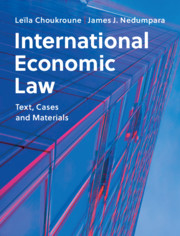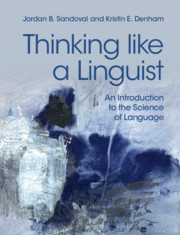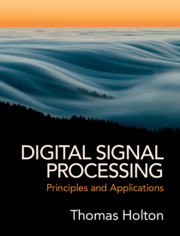Refine search
Actions for selected content:
36809 results in Cambridge Textbooks

International Economic Law
- Text, Cases and Materials
-
- Published online:
- 29 July 2021
- Print publication:
- 22 July 2021
-
- Textbook
- Export citation

Learning and Teaching in Early Childhood
- Pedagogies of Inquiry and Relationships
-
- Published online:
- 29 July 2021
- Print publication:
- 02 August 2021
-
- Textbook
- Export citation

Thinking like a Linguist
- An Introduction to the Science of Language
-
- Published online:
- 29 July 2021
- Print publication:
- 01 July 2021
-
- Textbook
- Export citation

Digital Signal Processing
- Principles and Applications
-
- Published online:
- 24 July 2021
- Print publication:
- 14 January 2021
-
- Textbook
- Export citation
8 - A regulatory laboratory
-
- Book:
- Law and Administration
- Published online:
- 06 July 2021
- Print publication:
- 22 July 2021, pp 301-344
-
- Chapter
- Export citation
1 - The state and administrative law
-
- Book:
- Law and Administration
- Published online:
- 06 July 2021
- Print publication:
- 22 July 2021, pp 1-42
-
- Chapter
- Export citation
Contents
- from 17 - Testing ground: Legality, process and substance
-
- Book:
- Law and Administration
- Published online:
- 06 July 2021
- Print publication:
- 22 July 2021, pp 725-775
-
- Chapter
- Export citation
Table of Statutes
-
- Book:
- Law and Administration
- Published online:
- 06 July 2021
- Print publication:
- 22 July 2021, pp xlvii-liv
-
- Chapter
- Export citation
9 - Regulatory look: Agency development and accountability
-
- Book:
- Law and Administration
- Published online:
- 06 July 2021
- Print publication:
- 22 July 2021, pp 345-398
-
- Chapter
- Export citation
16 - Interfacial Phenomena
-
- Book:
- Biofluid Mechanics
- Published online:
- 19 November 2021
- Print publication:
- 22 July 2021, pp 507-554
-
- Chapter
- Export citation
15 - The public inquiry: Investigation and accountability
-
- Book:
- Law and Administration
- Published online:
- 06 July 2021
- Print publication:
- 22 July 2021, pp 624-663
-
- Chapter
- Export citation
4 - Technical Barriers to Trade and Sanitary and Phytosanitary Measures
- from Part I - International Trade Law
-
- Book:
- International Economic Law
- Published online:
- 29 July 2021
- Print publication:
- 22 July 2021, pp 152-204
-
- Chapter
- Export citation
15 - International Monetary Law and Finance
- from Part III - Finance, Development and Aid
-
- Book:
- International Economic Law
- Published online:
- 29 July 2021
- Print publication:
- 22 July 2021, pp 647-682
-
- Chapter
- Export citation
1 - Groups
- from Part I - The Algebraic Background
-
- Book:
- Galois Theory and Its Algebraic Background
- Published online:
- 05 August 2021
- Print publication:
- 22 July 2021, pp 3-24
-
- Chapter
- Export citation
Contents
- from 14 - Tribunals and administrative justice
-
- Book:
- Law and Administration
- Published online:
- 06 July 2021
- Print publication:
- 22 July 2021, pp 582-623
-
- Chapter
- Export citation
3 - State of change
-
- Book:
- Law and Administration
- Published online:
- 06 July 2021
- Print publication:
- 22 July 2021, pp 77-141
-
- Chapter
- Export citation
References
-
- Book:
- Modern Communications
- Published online:
- 18 August 2021
- Print publication:
- 22 July 2021, pp 262-263
-
- Chapter
- Export citation
Contents
- from 10 - Contractual revolution
-
- Book:
- Law and Administration
- Published online:
- 06 July 2021
- Print publication:
- 22 July 2021, pp 399-465
-
- Chapter
- Export citation
Contents
- from 8 - A regulatory laboratory
-
- Book:
- Law and Administration
- Published online:
- 06 July 2021
- Print publication:
- 22 July 2021, pp 301-344
-
- Chapter
- Export citation
Introduction
-
- Book:
- An Invitation to Combinatorics
- Published online:
- 16 September 2021
- Print publication:
- 22 July 2021, pp 1-5
-
- Chapter
- Export citation
